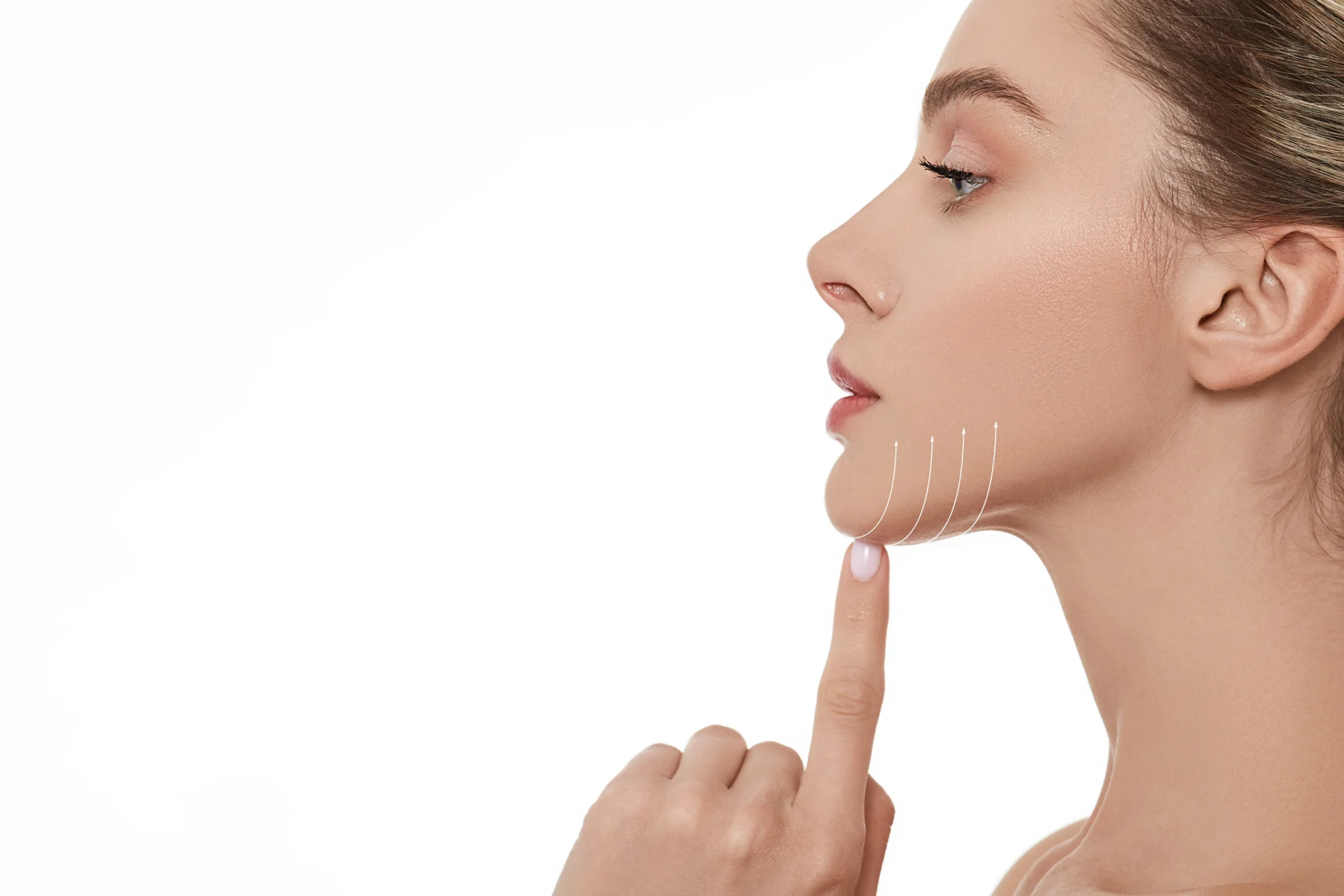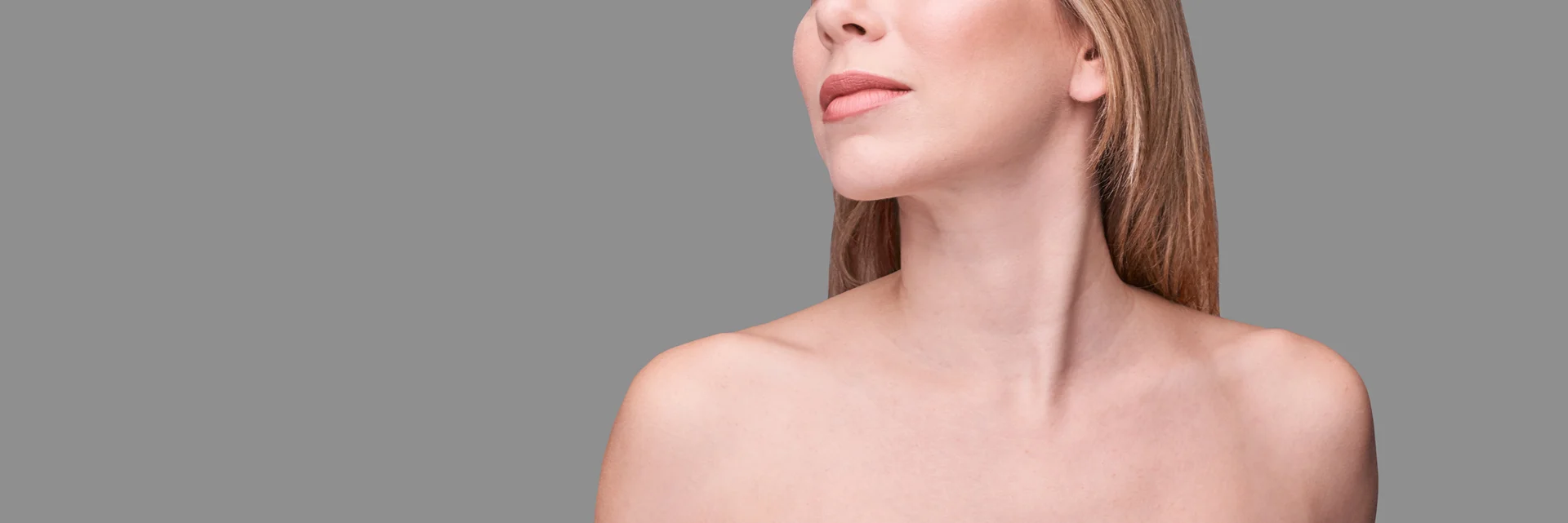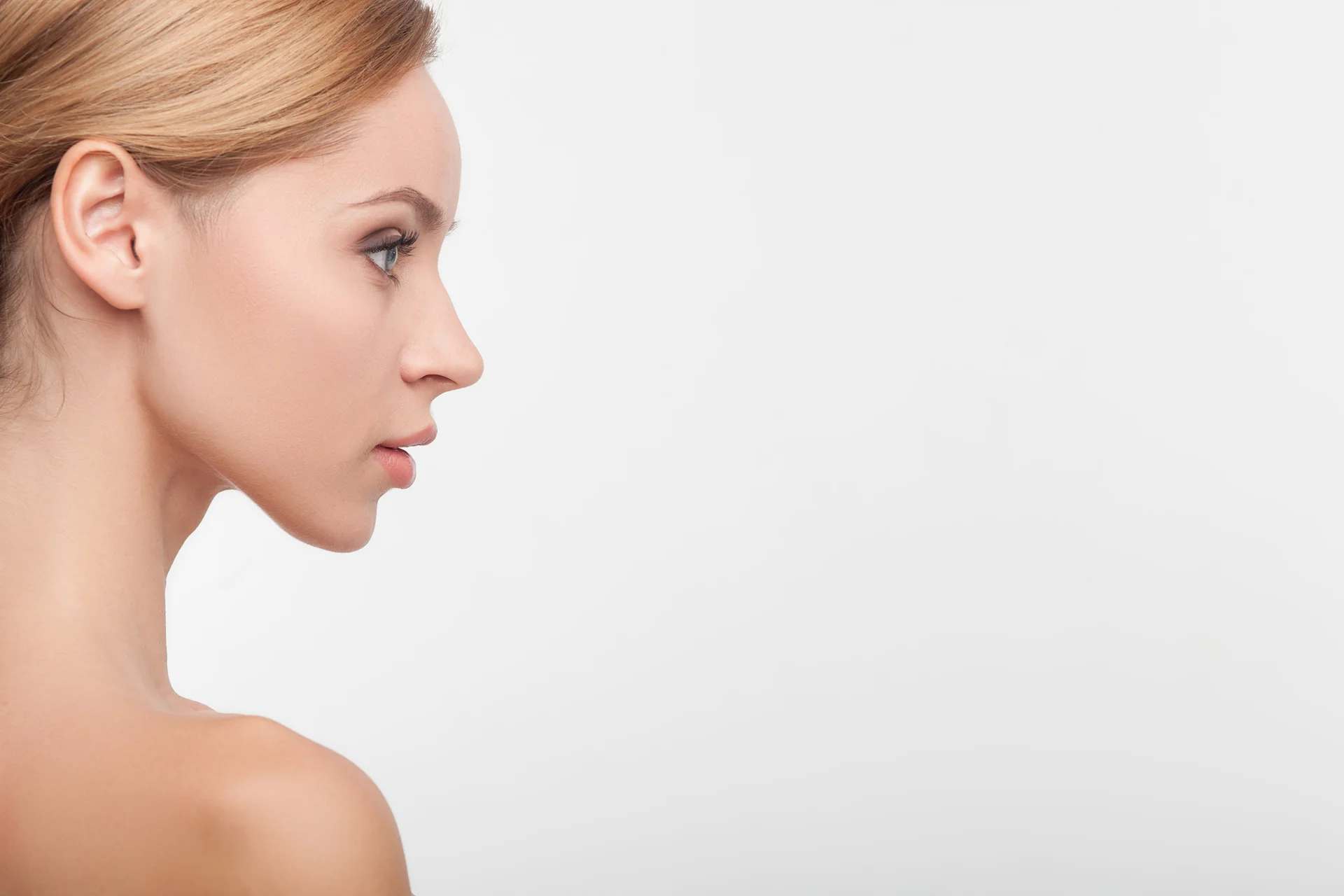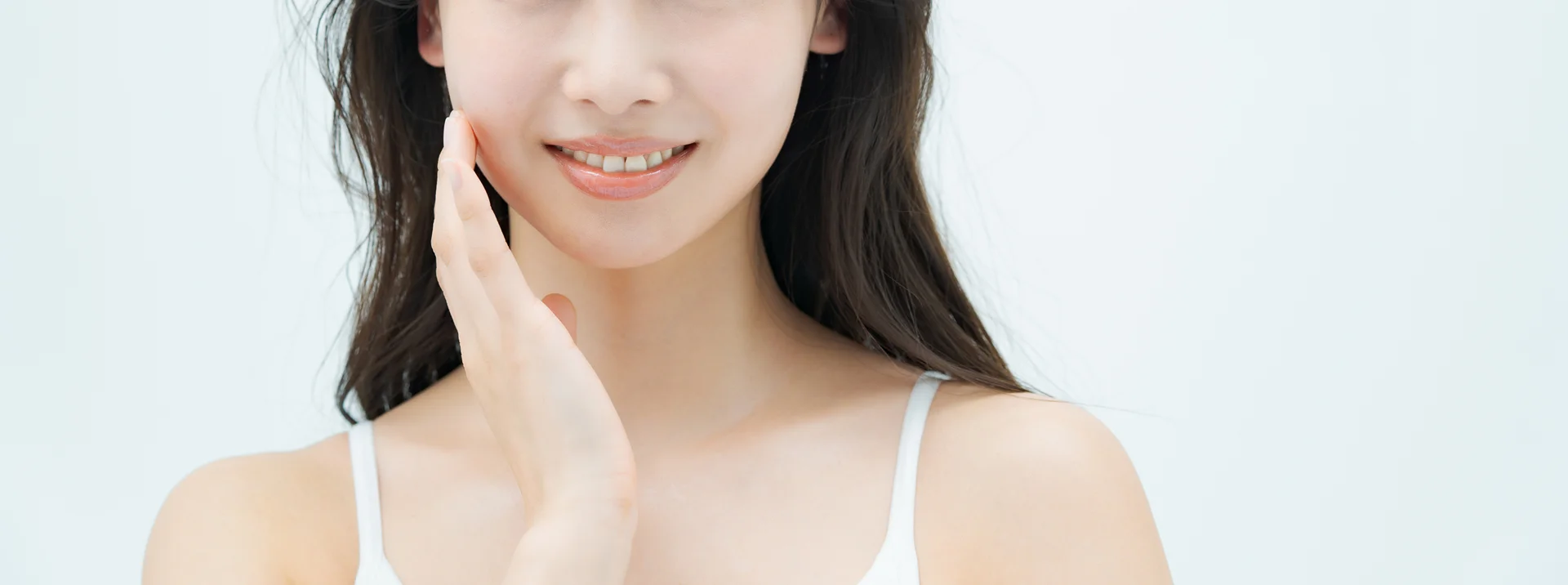After getting chin liposuction, it’s crucial to wear compression garments during recovery. But for how long? Wearing compression helps reduce swelling and supports new skin contours. However, garments can be uncomfortable. So when can you safely ditch them?
In this article, learn expert recommendations on compression garment duration after chin liposuction. With the right information, you can balance comfort and recovery during this delicate post-op period. Whether you’re preparing for chin lipo or recovering now, this guide will provide key insights on compression garment duration.
Understanding Chin Liposuction
Chin liposuction is a procedure that removes localized fat deposits under the chin and along the upper neck. It is an outpatient procedure performed under local or general anesthesia. A plastic surgeon makes small incisions under the chin and inserts a cannula to suction out excess fat cells, resulting in a slimmer and more defined jawline and chin contour.
Chin liposuction differs from full neck liposuction, which concentrates on the entire neck area. This procedure focuses specifically on the submental region below the chin. It effectively eliminates a double chin and can help patients achieve a more youthful, chiseled facial profile. Patients who maintain a relatively stable weight but still struggle with localized fat under the chin are often good candidates for chin liposuction.
The Role of Compression Garments in Recovery
Compression garments play several important roles during chin liposuction recovery. A chin strap, chin compression band, or custom chin wrap applies gentle, steady pressure to the treated area.
| Garment | Description | Purpose | Example |
| Chin strap | Designed to wrap around the chin and head. Usually made of soft and breathable fabric. | Provides compression to the chin and neck area. Helps to reduce swelling and promote healing after chin surgery. Can also be used as facial shapewear to lift and tighten the skin around the chin and jawline. | Post Surgery Neck and Chin Compression Garment Wrap Bandage, Face Slimmer, Jowl Tightening, Neck Coverage, Chin Lifting Strap |
| Chin compression band | Wraps around the back of the head and under the chin. | Provides compression to the chin and neck area. Used after chin liposuction or other cosmetic procedures. | Chin Compression Garment, Chin Strap Band Face Lift, Chin Lift Band, Neck Cover Face Compression |
| Custom chin wrap | Designed to fit the individual’s chin and neck shape. | Provides targeted compression to the chin and neck area. Used after chin surgery or to reduce swelling and promote healing. | Chin Support Strap – One Size |
These help reduce swelling and facilitates blood flow and lymphatic drainage. Compression also helps smooth irregularities and encourage proper healing for optimal contour smoothness.
During the initial recovery period, compression garments help minimize bruising and control swelling immediately following surgery. Over time, compression garments also help reduce residual swelling for faster resolution of chin and neck contours.
Patients are advised to wear chin compression continuously for the first week and as recommended by their plastic surgeon thereafter. Some common options include a compression strap style garment or fitted chin wrap.
Duration and Recommendations for Wearing Compression Garments
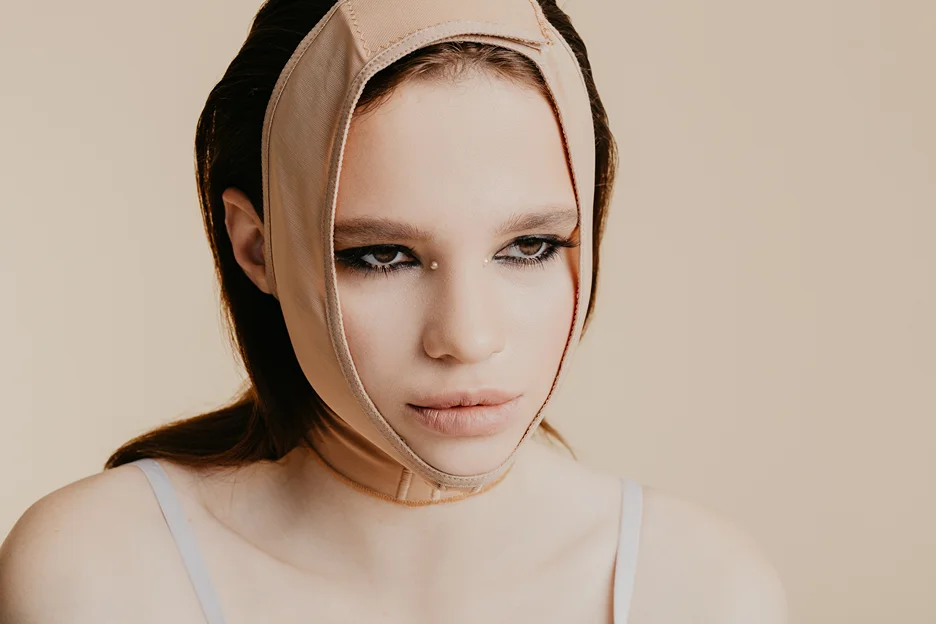
How long should compression garments be worn after chin lipo? Here are general guidelines:
Initial Period
Your surgeon will advise you to wear chin compression continuously (except for cleaning) for the first 5-7 days following surgery. This crucial period helps control early swelling.
Week 1
Compression is recommended at all times except for cleaning and reapplication for the first week post-op.
Weeks 2-4
At 2 weeks post-op, your surgeon may advise wearing the chin garment primarily at night and as needed during the day. The garment can provide comfort and control residual swelling.
Week 4 Onward
Between 4-6 weeks, compression garments may only be needed for comfort at night or for strenuous activity. Consistent wear is no longer required. Most residual swelling should be resolved.
Exact Duration
Follow your surgeon’s specific recommendations, as the ideal compression duration can vary. Factors include the extent of treatment performed and your body’s healing process.
Many patients find that wearing their chin compression strap at night after the initial week still provides comfort and swelling control as they sleep. Your surgeon can advise you on the ideal timeline and schedule based on your individual healing progress.
Addressing Common Concerns
It’s normal to have some concerns during recovery. Here’s guidance on some common questions about compression garments after chin liposuction:
Will wearing compression prevent loose skin or help skin elasticity?
Compression garments encourage new collagen formation and may have mild skin-tightening effects. However, compression alone cannot fully prevent loose skin if there is baseline skin laxity. Additional skin tightening treatments may be recommended, especially for patients with poor pre-existing skin elasticity.
Will the garment hide scars or contour irregularities?
The chin garment can help smooth and flatten the area treated, minimizing the appearance of early contour irregularities. However, compression garments do not truly hide scars long-term. With proper surgical technique, chin lipo scars should heal discretely.
Will the compression garment be painful or uncomfortable?
There may be some mild discomfort initially from swelling and the compressive chin strap. However, consistent wear allows patients to adjust. Prescription pain medication can provide relief as needed. Make sure to communicate any significant pain or discomfort to your surgeon.
Additional Post-Op Care and Recommendations
In addition to wearing compression garments as directed, be sure to follow all of your surgeon’s post-op care instructions after chin lipo for optimal healing. Key recommendations include:
| Recommendation | Description |
| Diet | Stick to a healthy, balanced diet and avoid sodium to prevent swelling. Focus on protein to support healing. Stay hydrated. |
| Exercise | Avoid strenuous exercise for at least 2-3 weeks. Follow your surgeon’s guidance on slowly resuming regular exercise and activity. |
| Massage | Gentle lymphatic drainage massages may provide comfort and encourage healing. Ask your surgeon when massages are recommended. |
| Skin Care | Moisturize incision sites carefully as they heal. Consistent healthy skin care and sun protection helps minimize scarring. Discuss options for continued skin tightening with your surgeon if desired. |
| Medications | Take all medications as directed. Over-the-counter pain relievers can provide comfort. Prescription pain medication may be prescribed for the first few days when swelling peaks. |
Potential Complications and How to Address Them
While rare, potential complications can occur with any surgery. Contact your physician right away if you experience:
- Chest pain, blood clots, or high blood pressure – These may indicate a complication related to anesthesia or circulation. Your surgeon will review critical warning signs to watch for.
- Significant swelling or skin changes – Some temporary swelling, numbness, and bruising are normal. However, excessive swelling, pain, warmth or asymmetric changes may indicate an issue such as a fluid collection under the skin. Prompt medical attention is key.
- Contour irregularities – Asymmetry, visibility of stitches, or irregular shapes may arise. Follow your surgeon’s instructions for compression, massage and follow-up to improve contour smoothness over time. Additional treatments may be recommended in some cases.
Maintaining proper aftercare and follow-up appointments with your board-certified plastic surgeon provides the best results. Be sure to follow all your surgeon’s postoperative directions and address any concerns promptly.
Conclusion
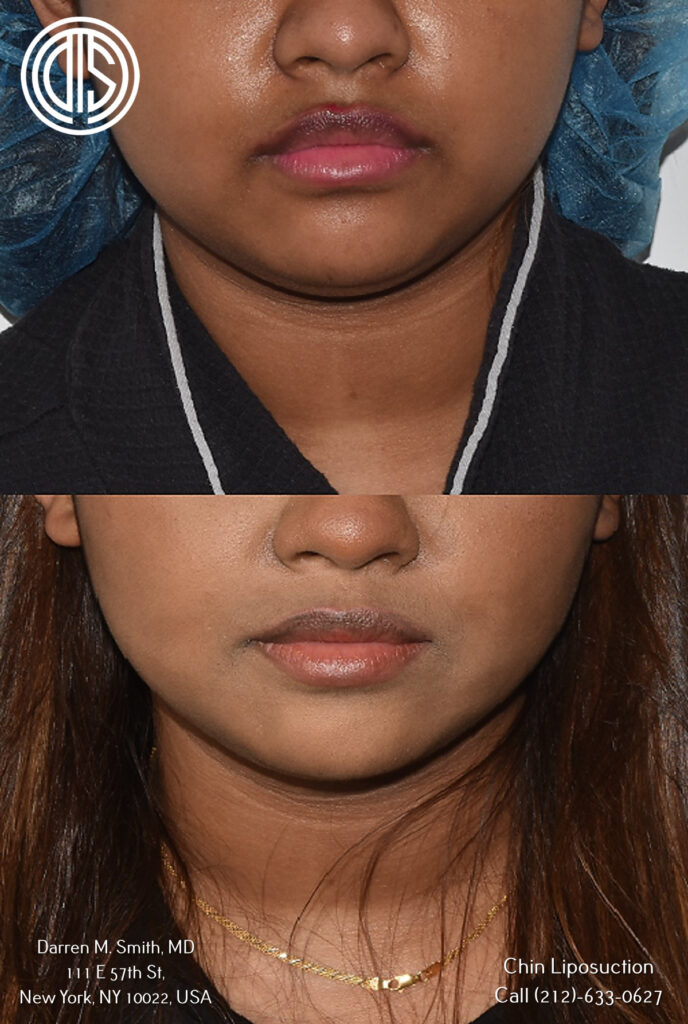
Chin liposuction delivered in expert hands can help patients achieve a slimmer, more contoured facial profile they can feel confident about. While not a substitute for weight loss, chin lipo eliminates isolated fat under the chin resistant to diet and exercise. Following proper aftercare and compression garment guidelines after surgery is crucial for safe, beautiful results.
We hope this overview has provided helpful guidance on how long to wear compression garments and what to expect during your recovery. Be sure to discuss your particular goals and concerns with a board-certified cosmetic surgeon. To schedule your personalized consultation with chin liposuction expert Dr. Darren M. Smith, contact us today.
FAQs
Here are answers to some frequently asked questions about compression garments after chin liposuction:
Q1: How much does chin lipo cost?
The cost for chin liposuction can range anywhere from $4,500 – $6,500 on average depending on the surgeon’s fees, the extent of treatment needed, and your geographic location. Many plastic surgeons offer financing plans as well.
Q2: How long is the recovery time after chin lipo?
Plan for 1-2 weeks of initial recovery where swelling peaks and compression is worn continuously. Most patients can resume light normal activities after 1 week. Moderate exercise may be possible by 2-3 weeks, and vigorous activity around 4-6 weeks post-op.
Q3: Can I wear makeup or sunscreen under the chin compression garment?
Makeup should be avoided under the garment as it can impair proper healing. However, once incisions are fully closed in the first few weeks, sunscreen may be applied carefully before reapplying the chin garment.
Q4: Will I experience weight gain after chin lipo?
If weight is kept stable, results from chin liposuction can be long-lasting. However, significant weight gain can possibly impact results over time. Maintaining a healthy weight through diet and exercise helps preserve a contoured profile.
Q5: How long should bruising or swelling last?
Bruising and swelling peak in the first 1-2 weeks. Bruising typically resolves within 2-3 weeks. Swelling gradually subsides over several weeks to months but can persist in small amounts for up to 6 months. Wearing compression regularly as directed can help minimize bruising and control residual swelling during the healing process.


